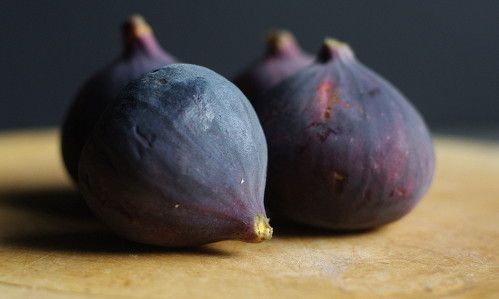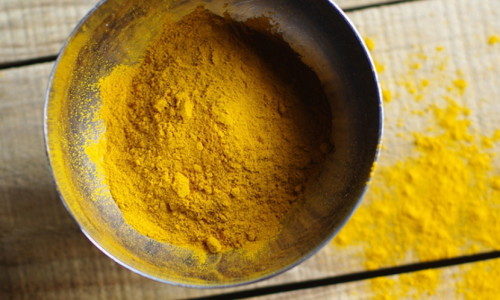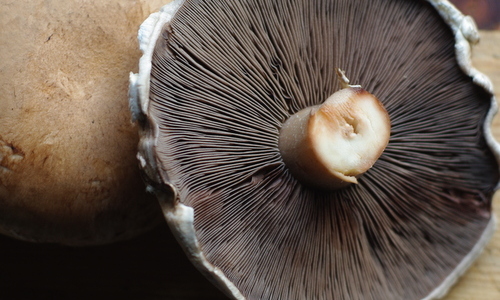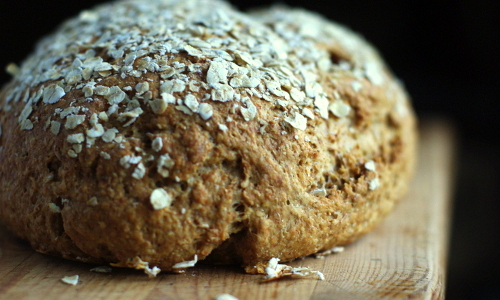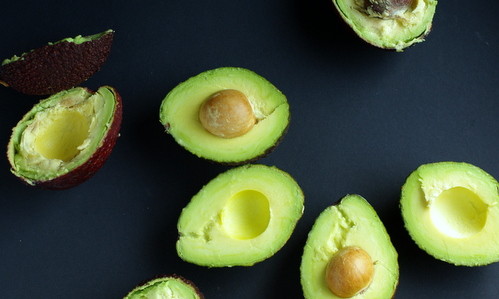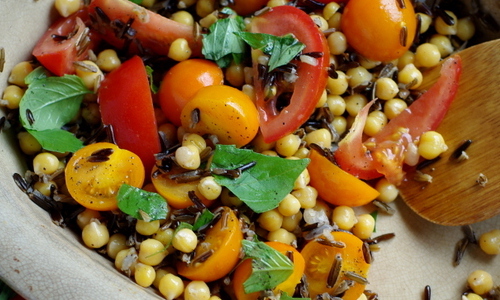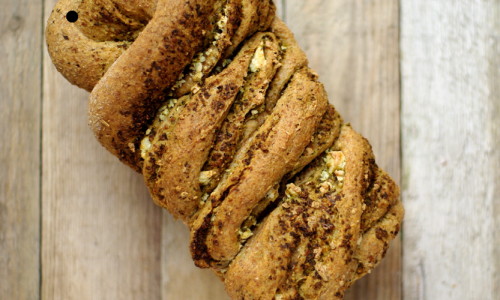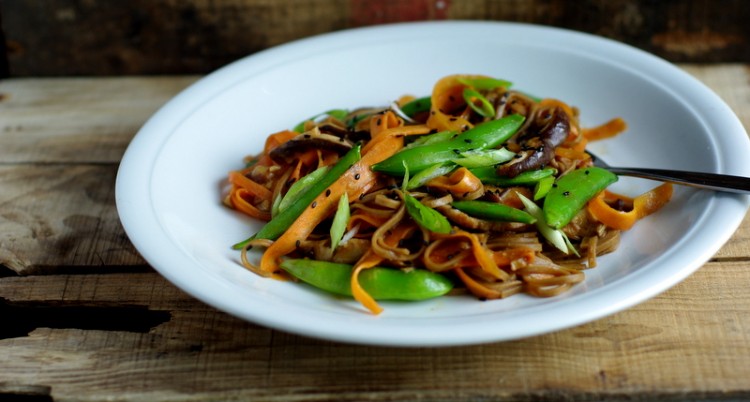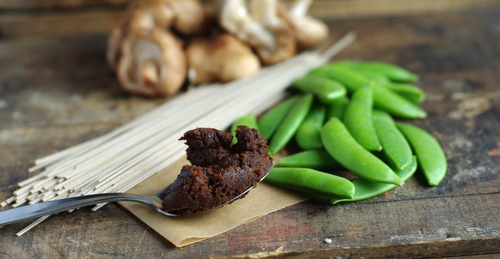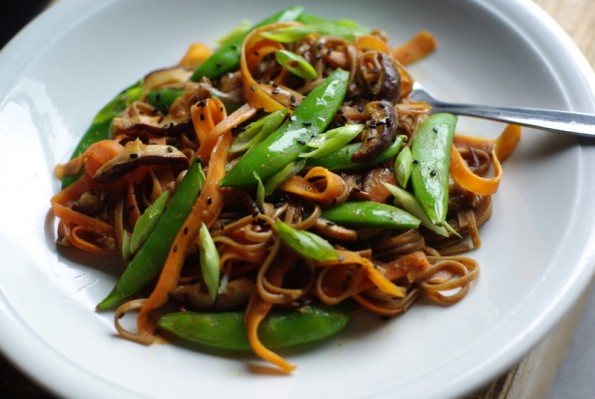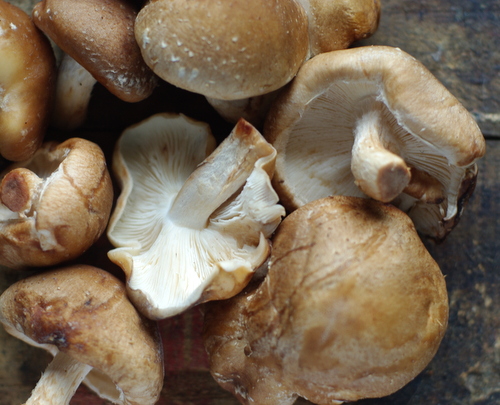A while ago I went to the health food store to get some flour. Always one to be taken in by the variety of interesting foods there, I was casually perusing their offerings as I made my way to pay for my flour when a package of red miso paste caught my eye. I was instantly convinced that miso paste was the thing I needed above all else. Clearly not having it was a glaring oversight on my part, after all, I’m a vegetarian, and isn’t it a requisite of vegetarianism to eat miso regularly? And so I smuggly bought it, got it home and made one bowl of miso soup and my jar of miso paste has been sitting abandoned at the back of the fridge ever since.
I had completely forgotten about it, and basically about the very existence of miso in general, until I came across that jar the other day when scrounging in the forgotten dark recesses of lost condiments lurking at the back of the fridge.
Hmmm… perhaps the time has come for the miso to make an appearance in my diet once again.
Miso is a paste usually made from fermented soy beans, but sometimes with the addition of fermented grains such as rice or barley as well. It is a traditional ingredient in Japan, and has been produced in East Asia since the neolithic era! It’s high in protein, vitamins and minerals and contains probiotics, all characteristics that have made it a very valuable source of nutrition through the history of Japan, and a valued health food today. It has a lovely salty flavour which can be described through the specifically descriptive savory taste “umami”.
The main reason that my miso had been sitting neglected for so long is that beyond miso soup I really had no idea what to do with it. So I turned to the internet. It turns out that miso has oodles of uses and pairs well with a huge variety of things. I found recipes ranging from classic miso soup, to fish and meat with miso glazes, to salads that incorporate it, and even a recipe for apple cobbler that incorporates white miso into the topping! Perhaps my miso using days have been revitalized and will see me branching out into a whole range of weird and wonderful umami infused dishes using the scope of various types of the ancient seasoning. We’ll see.
For today though I decided to start out fairly classically. I had some soba noodles waiting to be used, and this, paired with some miso glazed veggies sounded like a lovely combination. Soba noodles, by the way, are a wonderful ingredient if you haven’t used them before. They’re made from buckwheat flour, so are gluten-free, and have a wonderful earthy flavour and delicate noodle-y texture.
So here’s some miso glazed veg with soba noodles, not quite as adventurous as incorporating it into dessert (I do love trying out odd ingredients in baking…) but a delicious and nourishing dinner that’s pretty quick and easy too.
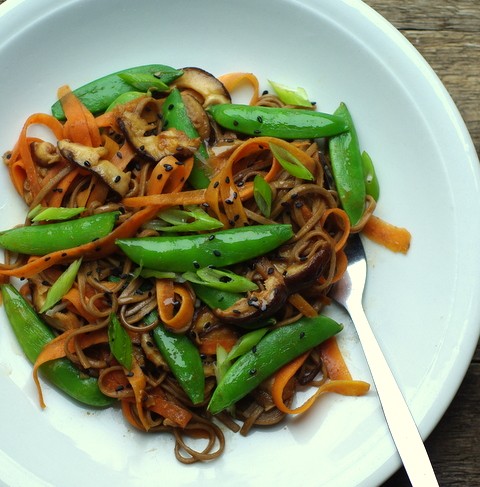

- 50g soba noodles
- 100g shitake mushrooms, stems removed, sliced
- 1 small carrot
- 75g sugarsnap peas
- 1 clove of garlic, crushed
- 1 tsp oil
- 1 Tbsp red miso paste
- 2 tsp soy sauce
- 1 tsp set honey
- 1/2 tsp ground ginger
- 1 spring onion, chopped
- 1/2 Tbsp black sesame seeds
- Set a small pot of water on medium high heat and bring it to the boil. Add the soba noodles and leave to boil for about 5 minutes, stirring occasionally until cooked but still a bit firm. Strain and rinse with cold water and set aside.
- Meanwhile heat the oil in a large frying pan over medium heat. Add the mushrooms, sugarsnap peas and garlic and leave to cook until tender, about 5 minutes, stirring frequently.
- To prepare the carrot slice thin ribbons from it with a vegetable peeler and cut the ribbons into narrow strips, set aside.
- To make the sauce combine the miso, soy sauce, honey and ginger in a small bowl and whisk with a fork until smooth.
- When the mushrooms and sugarsnap peas are tender stir in the sauce, noodles and carrots with a splash of hot water and stir until everything is well coated. Allow to cook for about 5 more minutes until everything is tender and hot. Remove from heat, stir in the spring onions and sesame seeds and serve immediately.

